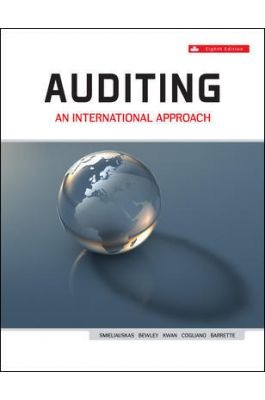Auditing A Business Risk Approach With Cases 8th Edition By Rittenberg – Test Bank
Chapter 11: Audit of Acquisition and Payment Cycle and Inventory Key
1. Inventory is complex and typically considered a high-risk area in audits of service firms.
FALSE
2. In order for the auditor to perform an engagement on a manufacturing firm, it is important that the entire integrated process is understood.
TRUE
3. An indication of potential inventory fraud is that inventory levels are growing faster than sales.
TRUE
4. The acquisition process begins with a purchase of goods or services
FALSE
5. Supply chain management has helped many companies improve the efficiency of operations.
TRUE
6. Management may intentionally misstate inventory balances by overvaluing items that are obsolete.
TRUE
7. An auditor can utilize a cross-sectional analysis for a client operating in multiple locations to identify areas of further inventory testing.
TRUE
8. Inventory turnover is often calculated by the auditor for proper disclosure in client financial statements.
FALSE
9. The acquisition and payment cycle typically begins with the cash disbursement for requested raw materials.
FALSE
10. A major control benefit of a centralized purchasing department is the segregation of the authorization function from the custody and recording functions.
TRUE
11. A purchase order identifies the quantity and description of products that have been received.
FALSE
12. For proper control, the receiving department should receive a copy of the purchase order that has the quantities blanked out.
TRUE
13. An individual outside of the purchasing department should be the only individual with access to the vendor tables in the database.
TRUE
14. The auditor’s primary concern with accounts payable is that of existence.
FALSE













Reviews
There are no reviews yet.